 "ttyymmnn" (ttyymmnn)
"ttyymmnn" (ttyymmnn)
07/08/2016 at 12:35 • Filed to: planelopnik, planelopnik history
 9
9
 16
16
 "ttyymmnn" (ttyymmnn)
"ttyymmnn" (ttyymmnn)
07/08/2016 at 12:35 • Filed to: planelopnik, planelopnik history |  9 9
|  16 16 |
Welcome to This Date in Aviation History , getting of you caught up on milestones, important historical events and people in aviation from July 6 - July 8.
!!! UNKNOWN CONTENT TYPE !!!

July 8, 2011 – The launch of the Space Shuttle Atlantis on STS-135, the final flight of the Space Shuttle program. Before the Space Shuttle !!!error: Indecipherable SUB-paragraph formatting!!! took its first flight on April 12, 1981, going into space had been the work of expendable spacecraft. Multi-stage rockets were left behind in orbit after their fuel was spent, or burned up re-entering the atmosphere, and the relatively tiny capsules that held the astronauts were so heavily damaged by the friction and heat of re-entry that they could not be used again. Not only was this a wasteful way to get into space, it was also terribly expensive, since everything had to be built from scratch for each launch. Beginning all the way back in 1969, the same year that !!!error: Indecipherable SUB-paragraph formatting!!! first set foot on the Moon, NASA started thinking about building a spacecraft that could be used again and again. They hoped that such a spacecraft could function essentially as a “space truck” and haul payloads into space relatively cheaply. The !!!error: Indecipherable SUB-paragraph formatting!!! got its official start in 1972 with an announcement by President !!!error: Indecipherable SUB-paragraph formatting!!! that NASA would develop what would eventually be called a Space Transport System (hence, all Shuttle missions were given the prefix “STS”). Initially, the goals for the new system were quite ambitious, with NASA hoping to preform as many as one launch per week. NASA considered many different designs, and there was much debate over just how much of the system would be reused. Engineers considered placing air-breathing engines on both the Shuttle and its booster, so both could be flown like a plane during landing, or even flown between landing and launch sites. Ultimately, NASA settled on a design where the orbiter sat atop a huge fuel tank, which would not be reused, and was boosted into space by a pair of solid rocket boosters which would be retrieved from the ocean and used again. While the Space Shuttle didn’t become a flying truck as NASA originally envisioned, it did become NASA’s orbital workhorse during its thirty years of service. It carried out hundreds of science experiments in the reusable !!!error: Indecipherable SUB-paragraph formatting!!! module carried in the Shuttle’s cargo bay, it was instrumental in the construction of the !!!error: Indecipherable SUB-paragraph formatting!!! (ISS), it rotated crews between Earth and the Russian !!!error: Indecipherable SUB-paragraph formatting!!! space station and the ISS, and placed the !!!error: Indecipherable SUB-paragraph formatting!!! , along with many satellites, into both low and high Earth orbit. It also carried classified Department of Defense payloads into space. STS-135 was the 135th and final mission of the Shuttle program. Like every previous Shuttle mission, Atlantis lifted off from !!!error: Indecipherable SUB-paragraph formatting!!! , and docked with the ISS on July 10. The mission was originally not scheduled to be flown due to a lack of funding, but NASA administrators stated the need to deliver materials to the ISS in light of delays in commercial rocket development, and the US Congress eventually provided funding for the mission. The crew of four astronauts was the smallest since !!!error: Indecipherable SUB-paragraph formatting!!! in 1983, a necessity since there were no Shuttles available for a rescue mission should the need arise. If Atlantis were damaged during launch, the crew would have to stay at the ISS and return to Earth on regularly scheduled !!!error: Indecipherable SUB-paragraph formatting!!! capsules, a process that would have taken a year.
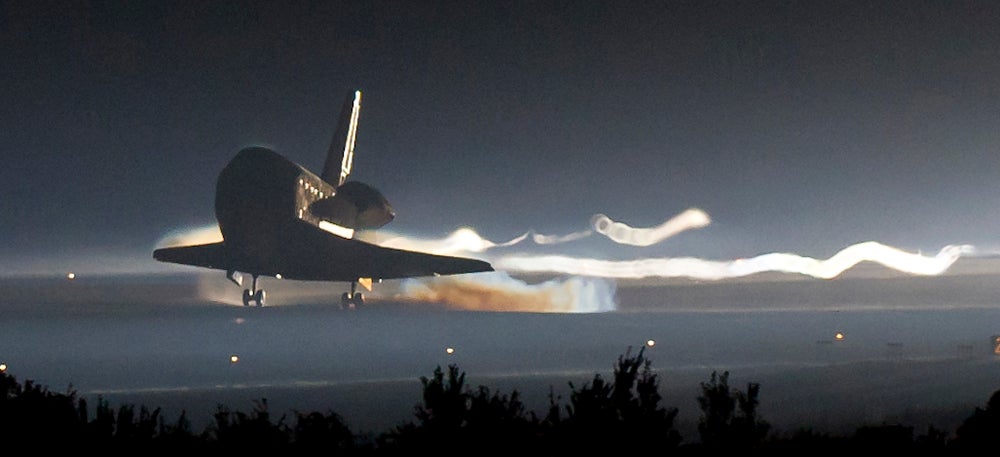
The end of an era: Atlantis touches down at the Kennedy Space Center on July 21, 2011
With the end of the Shuttle Program, resupply missions to the ISS have been taken over by commercial space interests as part of NASA’s
!!!error: Indecipherable SUB-paragraph formatting!!!
program. All crews will have to fly on Russian spacecraft until the completion of the
!!!error: Indecipherable SUB-paragraph formatting!!!
program to build a spacecraft capable of transporting crews into low Earth orbit, while NASA continues work on the
!!!error: Indecipherable SUB-paragraph formatting!!!
and
!!!error: Indecipherable SUB-paragraph formatting!!!
spacecraft for manned missions at greater distances, and a possible return to the Moon.
Atlantis
is currently on display at the Kennedy Space Center Visitor Complex.
(NASA photos)
!!! UNKNOWN CONTENT TYPE !!!
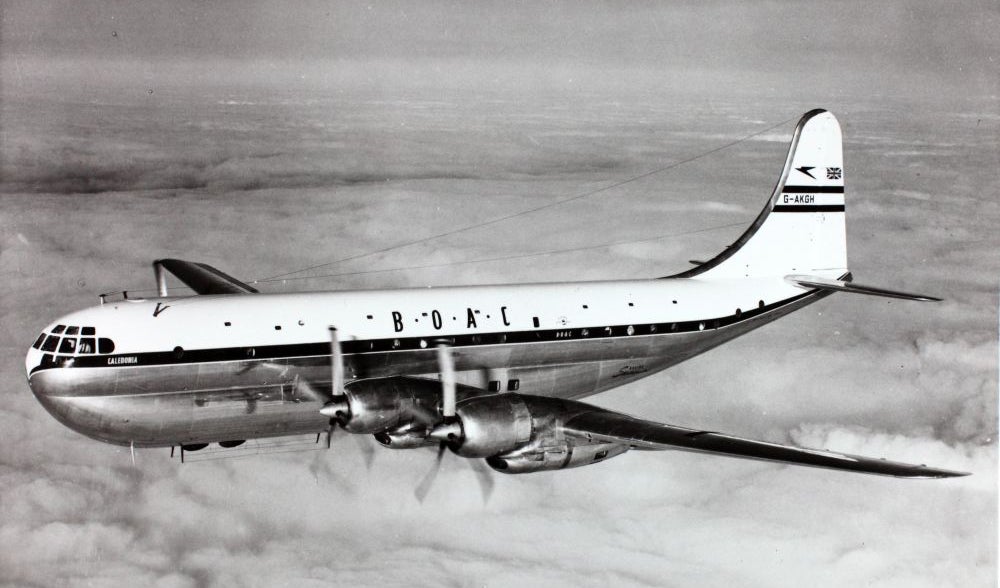
July 8, 1947 – The first flight of the Boeing 377 Stratocruiser. The passenger airliner entered service before WWII, but it was a relatively small aircraft by today’s standards. However, strategic bombing during the war required ever larger aircraft to fly great distances, and the large piston-powered aircraft reached its zenith. When the war ended, development of large aircraft moved from the military to the civilian sector, and airplanes that had originally been designed for battle would now form the basis for a new generation of large passenger airliners. In England, the !!!error: Indecipherable SUB-paragraph formatting!!! and !!!error: Indecipherable SUB-paragraph formatting!!! were developed from the !!!error: Indecipherable SUB-paragraph formatting!!! bomber, and the !!!error: Indecipherable SUB-paragraph formatting!!! bomber formed the basis for the !!!error: Indecipherable SUB-paragraph formatting!!! . But England wasn’t the only country that took advantage of military aircraft conversions. With the !!!error: Indecipherable SUB-paragraph formatting!!! , the US had produced one of the most technologically advanced bombers in the world. Designed to cross the vast reaches of the Pacific Ocean, the Superfortress had unparalleled range and power, and was already pressurized. Following the success of the B-29, Boeing decided to use it as the basis for a large cargo aircraft, and work on the !!!error: Indecipherable SUB-paragraph formatting!!! began in 1942. Boeing took the wings and lower fuselage, which remained largely unchanged, from the Superfortress and added a second, enlarged fuselage tube on top, creating a double-bubble fuselage that had an upper and lower deck. While double-decker seating wasn’t necessarily an innovation (earlier large flying boats such as the !!!error: Indecipherable SUB-paragraph formatting!!! had two decks), the 377 was one of the first postwar airliners to feature a lower seating area that accommodated 14 passengers in a lower deck lounge. The upper section was also wider than competing airliners by Douglas, and the supercharged !!!error: Indecipherable SUB-paragraph formatting!!! engines provided a higher level of pressurization for the cabin passengers, as well as air conditioning. Pan Am was the launch customer for the 377, ordering 20 Stratocruisers in 1945, and the first passenger-carrying flight was made in April 1949 from San Francisco to Honolulu. The 377 could accommodate up to 100 passengers on the upper deck, with an additional 14 in the lower deck lounge. For overnight flights, 28 passengers could be carried in berths that were more reminiscent of railroad !!!error: Indecipherable SUB-paragraph formatting!!! than airliners. By the sixth year of operation the 377 had carried over 3 million passengers, completed almost 3,600 transcontinental flights and over 27,000 translatlantic flights. As with other propeller-powered airliners, the 377 was eventually superseded by jet-powered airliners such as the !!!error: Indecipherable SUB-paragraph formatting!!! and !!!error: Indecipherable SUB-paragraph formatting!!! , and its last passenger flight was made in 1954. But the 377 had yet one more conversion to make. Once its airliner days were over, the 377 served as the basis for the line of oversized !!!error: Indecipherable SUB-paragraph formatting!!! cargo carriers. (Photo via San Diego Air and Space Museum)
!!! UNKNOWN CONTENT TYPE !!!
Short Take Off
!!! UNKNOWN CONTENT TYPE !!!
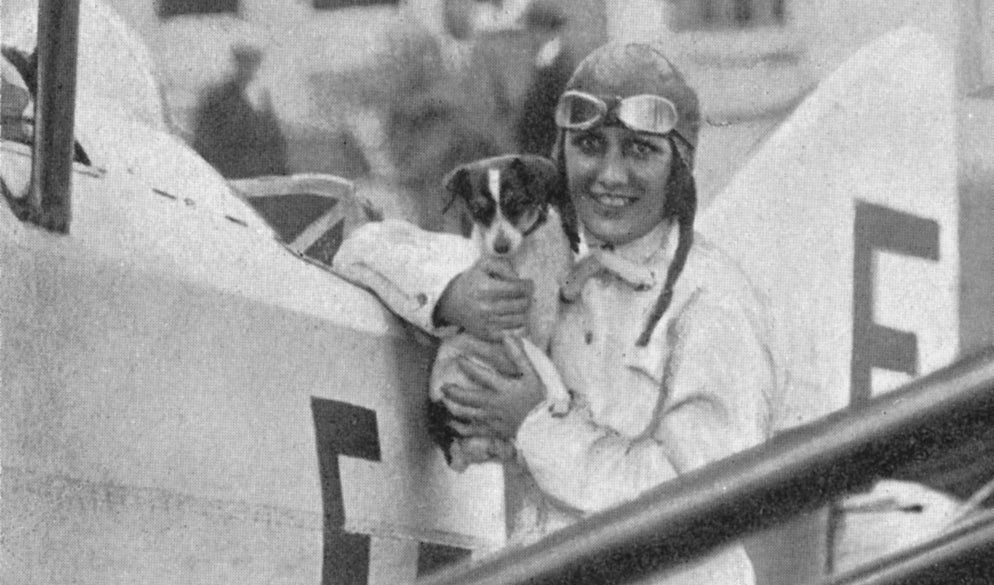
July 6, 1952 – The death of Maryse Bastié. Bastié was born on February 27, 1898 and became interested in flying after marrying a WWI fighter pilot. Following the death of her husband in 1926, Bastié began performing flying exhibitions to earn money, eventually purchasing her own aircraft, a !!!error: Indecipherable SUB-paragraph formatting!!! monoplane, in 1927. She set numerous records for women aviators, as well as a record time for a solo crossing of the South Atlantic, and was awarded the !!!error: Indecipherable SUB-paragraph formatting!!! in 1931. Bastié achieved the rank of Captain in the French Air Force while logging more than 3,000 hours of flying time, and was made a Commander in the French !!!error: Indecipherable SUB-paragraph formatting!!! . Bastié was killed in a crash at age 54. (Photo author unknown)
!!! UNKNOWN CONTENT TYPE !!!
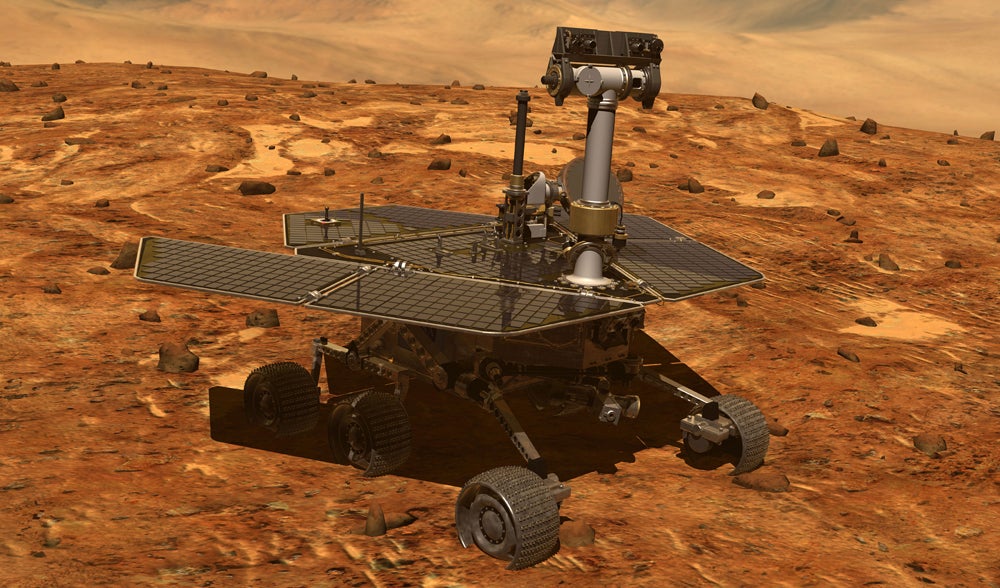
July 7, 2003 – The launch of Mars Exploration Rover–B, better known as Opportunity . Opportunity was launched as part of NASA’s !!!error: Indecipherable SUB-paragraph formatting!!! program, and landed on Mars on January 25, 2004, three weeks after its sister rover !!!error: Indecipherable SUB-paragraph formatting!!! (MER-A). Spirit became mired in 2009 and ceased communications in 2010, but Opportunity continues to function 12 years later, even though it was designed to function for only 90 days. Launched atop a !!!error: Indecipherable SUB-paragraph formatting!!! rocket, the rover has made significant discoveries on the geology of Mars, and has helped to determine whether the Red Planet was ever capable of sustaining life, looking particularly for signs of water. By 2014, Opportunity had traversed over 25 miles of the Martian surface, surpassing the previous record for a rover set by the Russian !!!error: Indecipherable SUB-paragraph formatting!!! rover that flew to the Moon in 1973. (NASA illustration)
!!! UNKNOWN CONTENT TYPE !!!
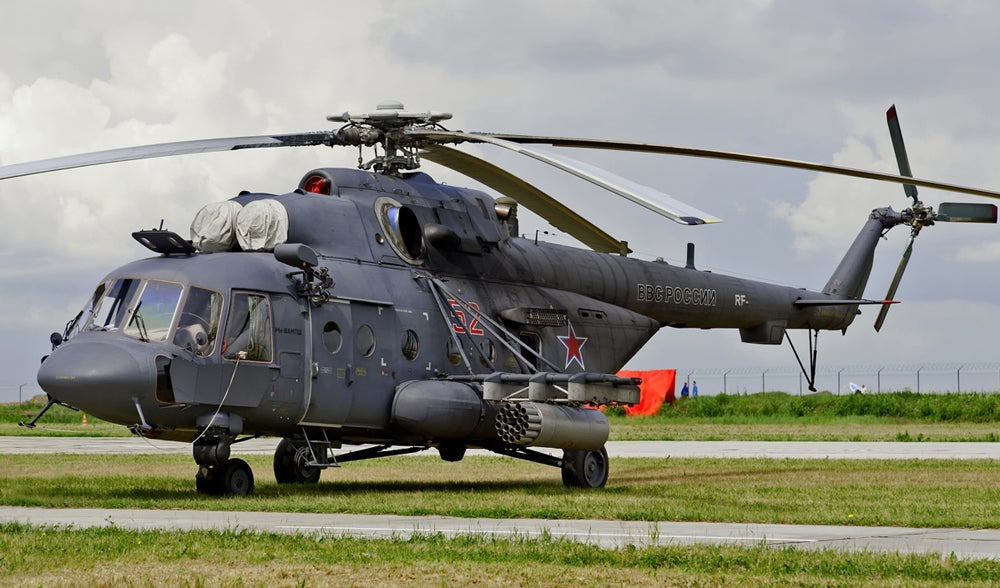
July 7, 1961 – The first flight of the Mil Mi-8, a twin-turbine helicopter that was originally designed as a transport helicopter and can also used as an airborne command post, gunship, and for reconnaissance duties. More than 17,000 have been built since production began in 1961, and it is the most common operational military helicopter in the world. Originally designed by Mil as a replacement for the radial-engined !!!error: Indecipherable SUB-paragraph formatting!!! , the Mi-8 can accommodate up to 16 troops or 3,500 pounds of cargo and has a top speed of 161 mph. The Mi-8 entered service in 1967, is flown by 71 countries worldwide, and remains in production today. (Photo by Aleksandr Markin via !!!error: Indecipherable SUB-paragraph formatting!!! )
!!! UNKNOWN CONTENT TYPE !!!
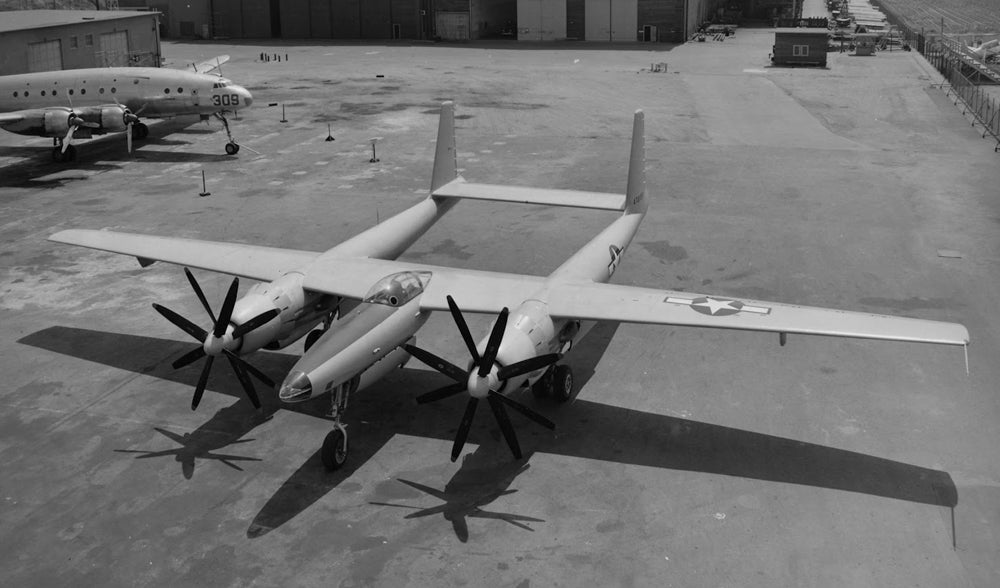
July 7, 1946 – The first flight of the Hughes XF-11, an experimental reconnaissance aircraft built for the US Army Air Corps by Howard Hughes. Resembling the !!!error: Indecipherable SUB-paragraph formatting!!! , the XF-11 was built to compete with the !!!error: Indecipherable SUB-paragraph formatting!!! for a US Army Air Forces contract and was fitted with such a complex system of !!!error: Indecipherable SUB-paragraph formatting!!! , !!!error: Indecipherable SUB-paragraph formatting!!! propellers that the second prototype was fitted with traditional propellers. On its maiden flight, a hydraulic leak caused caused the loss of one engine, and Hughes crashed while attempting to make an emergency landing on a golf course, an accident that the Army attributed to pilot error. Hughes was seriously injured, but survived. After he recovered, he successfully flew the second prototype in 1947, but the USAAF had lost interest in both the XF-11 and the XF-12, and both projects were canceled. (US Air Force photo)
!!! UNKNOWN CONTENT TYPE !!!

July 8, 1999 – The death of Charles “Pete” Conrad, test pilot, aeronautical engineer, astronaut, and the third man to walk on the Moon. Born on June 1, 1930, Conrad began his astronaut career with NASA as a member of !!!error: Indecipherable SUB-paragraph formatting!!! , flying with !!!error: Indecipherable SUB-paragraph formatting!!! on !!!error: Indecipherable SUB-paragraph formatting!!! , in which the astronauts set an endurance record with their eight-day mission orbiting the Earth, and on !!!error: Indecipherable SUB-paragraph formatting!!! Conrad went to the Moon as mission commander on !!!error: Indecipherable SUB-paragraph formatting!!! , and also commanded !!!error: Indecipherable SUB-paragraph formatting!!! , the first manned mission to the !!!error: Indecipherable SUB-paragraph formatting!!! orbital space station. For this mission, which undertook significant repairs to the space station, Conrad was awarded the !!!error: Indecipherable SUB-paragraph formatting!!! in 1978. (NASA photo)
!!! UNKNOWN CONTENT TYPE !!!
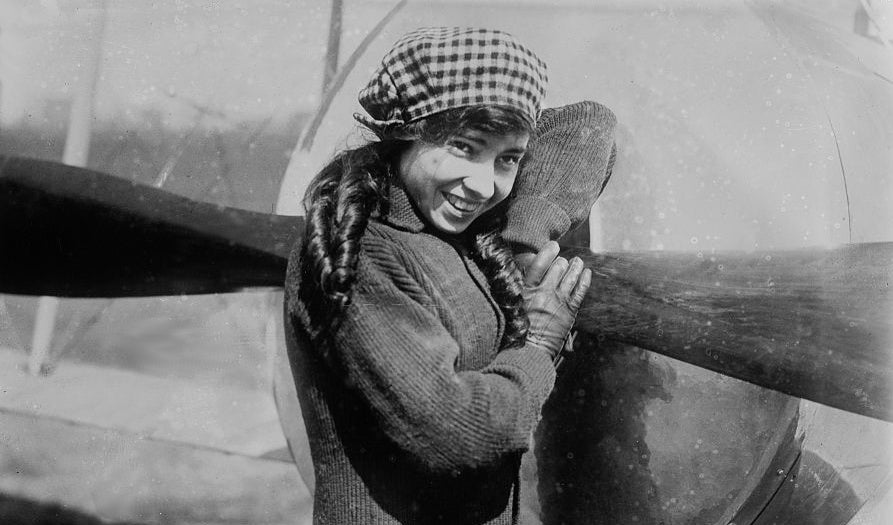
July 8, 1977 – The death of Katherine Stinson. Born on February 14, 1891, Stinson was the fourth woman in the US to obtain her pilot certificate, soloing at the age of 21 after just four hours of instruction. The following year, she began touring on the exhibition circuit, where she was known as “The Flying Schoolgirl,” and in 1915 she became the first female pilot to perform a loop. In 1917, Stinson set an American record for non-stop flying when she completed a 606 mile flight from San Diego to San Francisco. During WWI, Stinson drove an ambulance in Europe, where she contracted influenza and was forced to give up flying. Her brothers, inspired by her feats of flying, started the !!!error: Indecipherable SUB-paragraph formatting!!! in 1920. Katherine Stinson died in 1977 at age 86. (US Library of Congress photo)
!!! UNKNOWN CONTENT TYPE !!!
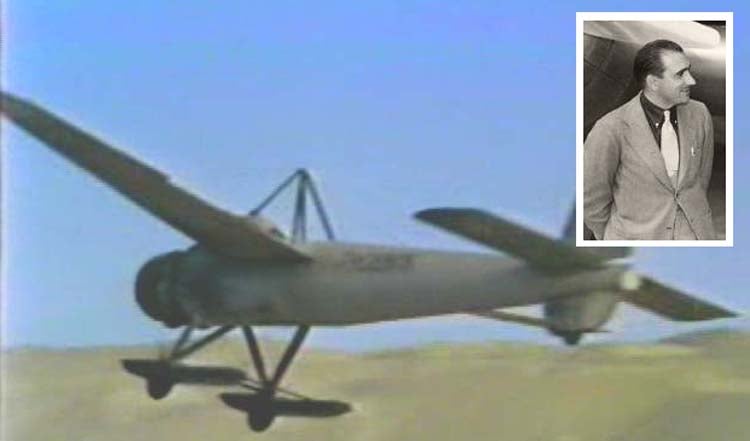
July 8, 1965 – The death of Paul Mantz, best known for his work as both an air racing pilot and movie stunt pilot. After a stint as a commercial pilot, Mantz went to work in Hollywood, working for !!!error: Indecipherable SUB-paragraph formatting!!! and others, making his film debut flying a !!!error: Indecipherable SUB-paragraph formatting!!! biplane in the 1932 film !!!error: Indecipherable SUB-paragraph formatting!!! . During the war, Mantz served in the !!!error: Indecipherable SUB-paragraph formatting!!! , and took up racing after the war, winning the !!!error: Indecipherable SUB-paragraph formatting!!! in three consecutive years. Continuing his movie career, Mantz was hired to fly the !!!error: Indecipherable SUB-paragraph formatting!!! , a highly modified aircraft that was meant to represent a jury-built aircraft flown by out of the desert by a marooned aircrew in !!!error: Indecipherable SUB-paragraph formatting!!! . During filming, Mantz carried out a particularly aggressive maneuver and the plane broke apart. The FAA investigation cited alcohol consumption as a factor in the crash, though others dispute that finding. (Aircraft screenshot from The Flight of the Phoenix ; Mantz photo public domain)
!!! UNKNOWN CONTENT TYPE !!!
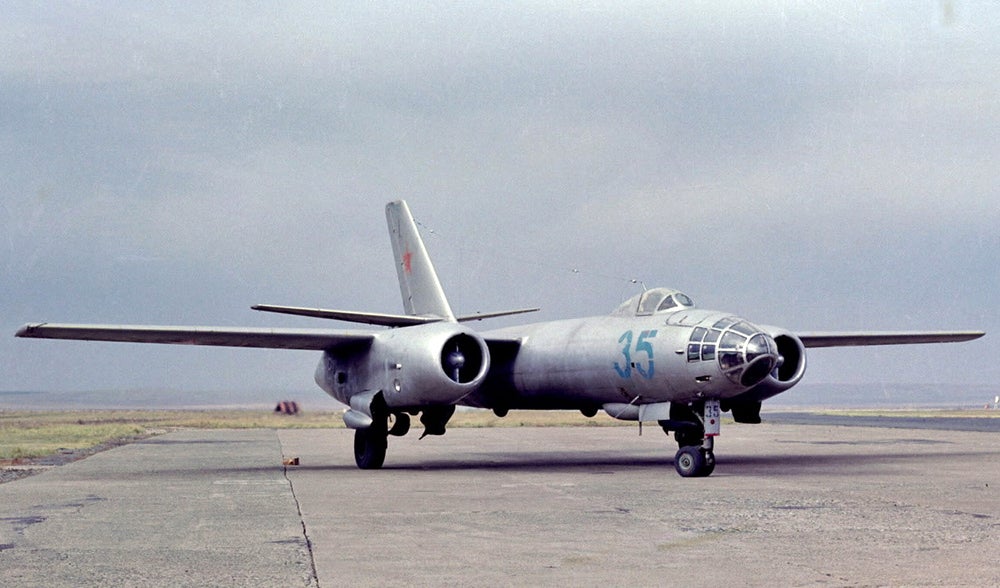
July 8, 1948 – The first flight of the Ilyushin Il-28, an early postwar twin-engine bomber produced for the Soviet Air Force and the first jet-powered bomber to enter large scale production. Ilyushin developed the Il-28 (NATO reporting name Beagle) first using !!!error: Indecipherable SUB-paragraph formatting!!! turbojet engines purchased from Britain, and then used reverse engineered copies designated the !!!error: Indecipherable SUB-paragraph formatting!!! . The Il-28 had a top speed of 560 mph, could carry up to 6,600 pounds of bombs, and was also fitted with four cannons, two in the nose and two in the tail for defense. A total of 6,635 were produced, with just under 200 converted to two-seat trainers. The Il-28 was widely exported, and was also built under license in China as the Harbin H-5. The Soviets retired the Il-28 in the 1980s, though some remained in service into the 1990s. (Photo author unknown via !!!error: Indecipherable SUB-paragraph formatting!!! )
!!! UNKNOWN CONTENT TYPE !!!
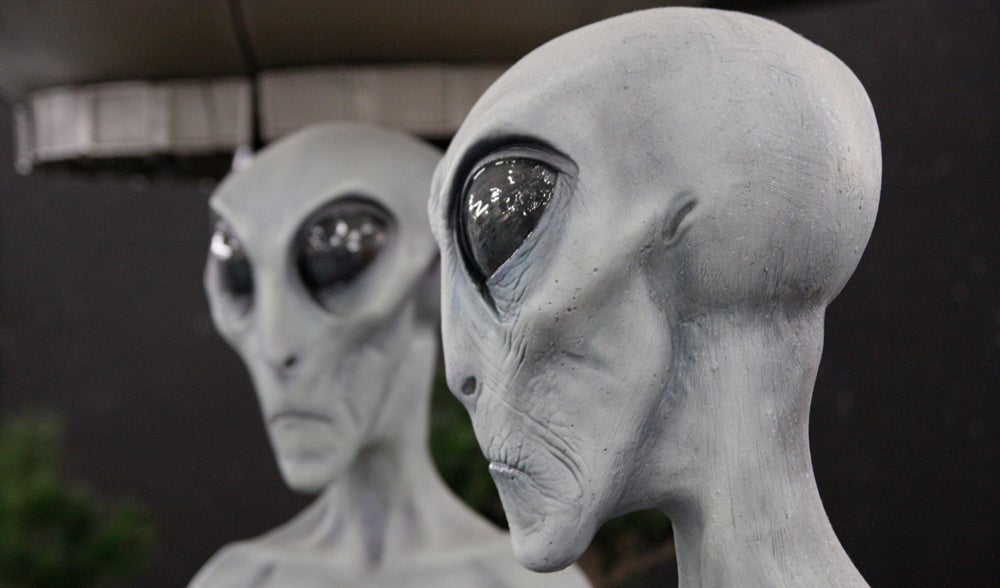
July 8, 1947 – The Roswell Daily Record reports that a UFO crash landed in Roswell, New Mexico. The UFO craze finds its roots in rural New Mexico when a farmer near Roswell found pieces of what he believed was an alien spacecraft and the local newspaper !!!error: Indecipherable SUB-paragraph formatting!!! announcing the capture of a “flying saucer.” The US military arrived, quickly took the wreckage away, and told local residents that it was debris from a crashed weather balloon, fueling theories of a government cover up. Recently released documents now explain that the debris was actually part of !!!error: Indecipherable SUB-paragraph formatting!!! , a balloon that carried secret listening devices to detect Soviet nuclear tests. Other reports that actual aliens had been found in the wreck are most likely due to the discovery of weighted mannequins that were dropped from Air Force planes to test the the effects of high-altitude ejections from aircraft. (Photo by the author)
!!! UNKNOWN CONTENT TYPE !!!
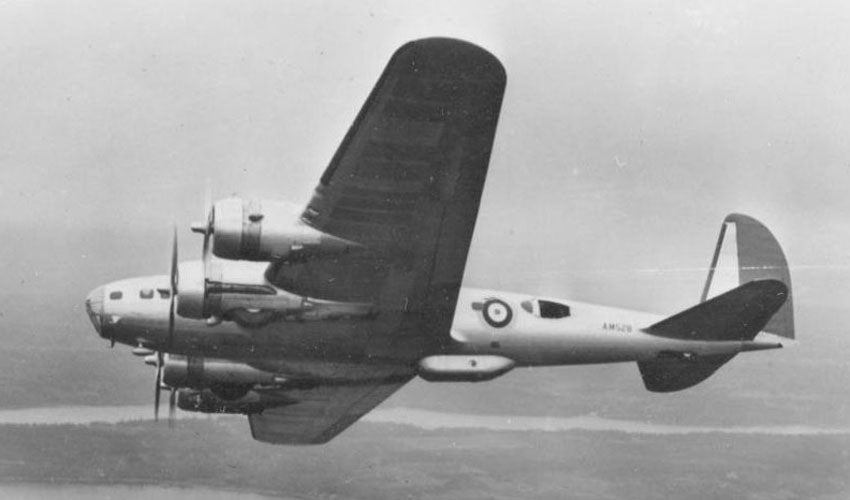
July 8, 1941 – The Boeing B-17 Flying Fortress flies its first combat mission of WWII. The !!!error: Indecipherable SUB-paragraph formatting!!! was one of the iconic heavy strategic bombers of WWII, but despite its widespread use by the US, particularly in Europe, the Flying Fortress was first flown into battle by the RAF in 1941. At the start of the war, England had no heavy bomber of its own, so the US Army Air Corps provided them with 20 B-17Cs (the RAF designated it the Fortress I), and the bomber saw its first action of the war in an unsuccessful raid against the German port at Wilhelmshaven. The B-17 never really caught on with the RAF, and after losing 8 of their initial fleet, the remaining bombers were shifted to Coastal Command. (US Air Force photo)
!!! UNKNOWN CONTENT TYPE !!!
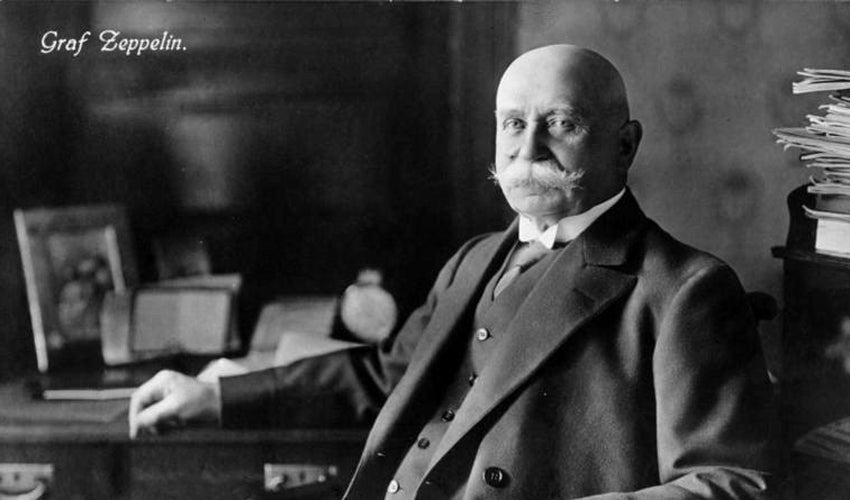
July 8, 1838 – The birth of Ferdinand Graf von Zeppelin. Count Zeppelin was born in modern-day Baden Würtemberg and served as a general in the army of Würtemberg before turning his interest to aviation. Zeppelin observed the use of observation balloons during the American Civil War, then returned to Europe to develop dirigibles and then rigid airships. His first airship, !!!error: Indecipherable SUB-paragraph formatting!!! , first flew in July 1900, and he followed it with ever larger airships that would eventually be capable of transatlantic flight. Zeppelins were used in combat during WWI, but their heyday ended in 1937 with the crash of the !!!error: Indecipherable SUB-paragraph formatting!!! (LZ 129) and the advent of transatlantic airliners. Zeppelin died on March 8, 1917. (Photo via Deutsches Bundesarchiv)
!!! UNKNOWN CONTENT TYPE !!!
Recent Aviation History Posts
!!! UNKNOWN CONTENT TYPE !!!
!!! UNKNOWN CONTENT TYPE !!!
!!! UNKNOWN CONTENT TYPE !!!
!!! UNKNOWN CONTENT TYPE !!!
!!! UNKNOWN CONTENT TYPE !!!
If you enjoy these Aviation History posts, please let me know in the comments. And if you missed any of the past articles, you can find them all at !!!error: Indecipherable SUB-paragraph formatting!!! .
!!! UNKNOWN CONTENT TYPE !!!
 Smallbear wants a modern Syclone, local Maple Leafs spammer
> ttyymmnn
Smallbear wants a modern Syclone, local Maple Leafs spammer
> ttyymmnn
07/08/2016 at 12:42 |
|
That Fortress looks so odd with the original tail and no tail gunner...
 OPPOsaurus WRX
> ttyymmnn
OPPOsaurus WRX
> ttyymmnn
07/08/2016 at 12:42 |
|
i love the space parts. You should do two of these, one for space and one for aviation, cuz i’m sure you have all the time in the world haha.
 SidewaysOnDirt still misses Bowie
> ttyymmnn
SidewaysOnDirt still misses Bowie
> ttyymmnn
07/08/2016 at 12:48 |
|
July 8, 1941 – The Boeing B-17 Flying Fortress flies its first combat AMERICA SHOWING HOW IT’S DONE mission of WWII
 SidewaysOnDirt still misses Bowie
> Smallbear wants a modern Syclone, local Maple Leafs spammer
SidewaysOnDirt still misses Bowie
> Smallbear wants a modern Syclone, local Maple Leafs spammer
07/08/2016 at 12:49 |
|
The C was not very good by B17 standards. Still pwnd whatever shit the Brits were flying though, so they kept using them.
 McMike
> ttyymmnn
McMike
> ttyymmnn
07/08/2016 at 13:05 |
|
Multi-stage rockers

 ttyymmnn
> OPPOsaurus WRX
ttyymmnn
> OPPOsaurus WRX
07/08/2016 at 13:13 |
|
Yeah, like that’ll happen. Thanks for reading.
 RallyWrench
> ttyymmnn
RallyWrench
> ttyymmnn
07/08/2016 at 13:19 |
|
“Recently released documents now explain that the debris was actually part of Project Mogul ....etc... “
Said the government, who always tells the truth, am I right?
 Jonathan Harper
> ttyymmnn
Jonathan Harper
> ttyymmnn
07/08/2016 at 13:23 |
|
great read, thanks!
 ttyymmnn
> Jonathan Harper
ttyymmnn
> Jonathan Harper
07/08/2016 at 13:33 |
|
Thanks!
 ttyymmnn
> RallyWrench
ttyymmnn
> RallyWrench
07/08/2016 at 13:33 |
|
Of course! However, it is a very plausible explanation, considering the era.
 Sam
> ttyymmnn
Sam
> ttyymmnn
07/08/2016 at 13:52 |
|
If the Space Shuttle wasn’t such a terrible design, it might still exist. Strapping the payload to the side of the lifter? Really? Imagine if the Apollo capsules were hanging off the side of the Saturn V.
 sunnydaysam
> ttyymmnn
sunnydaysam
> ttyymmnn
07/08/2016 at 13:53 |
|
Thanks for another great read, Ttyymmnn. My Dad told me he always thought Hughes’ crash in the XF-11 resulted in brain damage to Hughes and he never acted ‘normal’ (for him) after that. From what I’ve read I agree with that assessment.
 RallyWrench
> ttyymmnn
RallyWrench
> ttyymmnn
07/08/2016 at 13:54 |
|
It is, but...
 ttyymmnn
> sunnydaysam
ttyymmnn
> sunnydaysam
07/08/2016 at 13:58 |
|
I’m not sure he was ever “normal” from the start. But yeah, that crash very nearly killed him.
 sunnydaysam
> ttyymmnn
sunnydaysam
> ttyymmnn
07/08/2016 at 14:30 |
|
Hughes defined the term, ‘eccentric’ for sure. A great visionary though and he certainly contributed a lot to aviation which was his love. All of us fellow Avnuts owe him.
 facw
> ttyymmnn
facw
> ttyymmnn
07/08/2016 at 16:17 |
|
North Korea still uses those Il-28s (or the Chinese version). I can’t imagine they are much of a threat, but there is video of one flying in a demonstration for Kim Jong-un